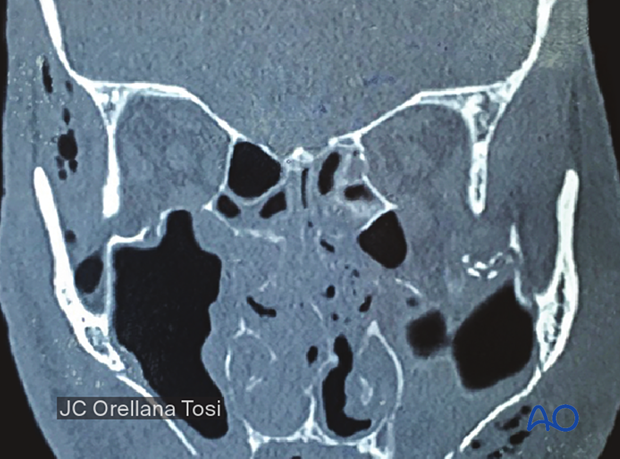Orbital floor fracture
Definition
Orbital floor fractures can present as blow-out fractures or in combination with a zygoma or Le Fort fractures. A blow-out fracture (pure) is a fracture of one or more internal orbital walls without fractures of the orbital rims. This type of fracture often results in an increase in the volume of the orbit.
When we refer to a pure orbital floor fracture in this text, we are generally referring to a blow-out fracture.
General considerations
Clinical diagnosis is based on a meticulous examination of the eye, including the patient’s vision and palpation of the orbital rims.
Since the advent of CT imaging, the surgeon can better define fractures, the degree of fracture displacement, and the necessity for fracture reduction. Multi-planar CTs should be obtained in the axial coronal planes and sagittal reconstructions in the longitudinal axis of the optic nerve.
The complexity of an orbital fracture is defined by the combination of its anterior-posterior and mediolateral extensions. This complexity is not visible on plain films. Therefore, proper diagnosis and treatment should be based on voxel-based datasets (CT, cone beam).
Intra-/periorbital air is a common feature of an orbital wall fracture, which appears clinically as emphysema (independent of whether the injury was penetrating or nonpenetrating) due to communication with the sino-nasal cavities.
The most widely available technology is CT scanning, which has the advantage of combined hard- and soft-tissue visualization. Cone beam technology is becoming increasingly popular, although only hard tissues can be reliably assessed. MRI is limited to soft-tissue visualization and provides only indirect information on hard tissues. It is rarely obtained for specialized evaluation of orbital soft tissue.
In some cases, it is difficult to fully appreciate the fracture extent, morphology, and quality from the CT scan alone. In very complex cases, a complete understanding of the fracture is obtained only after surgical exposure.
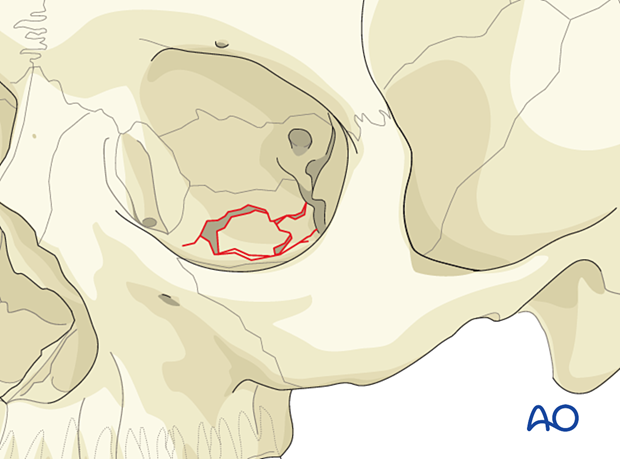
Radiographic findings
Coronal slices (hard-tissue window) of an isolated right orbital floor fracture.
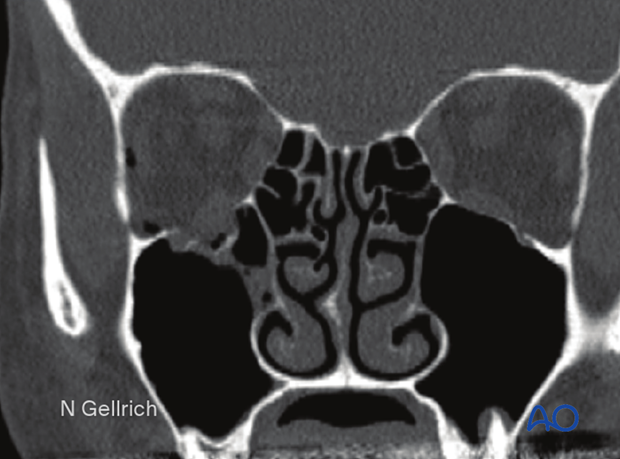
Coronal slices (soft-tissue window) of the same isolated right orbital floor fracture. Soft-tissue windows may better define the extraocular muscle's involvement and the degree of soft-tissue herniation into the sinuses.
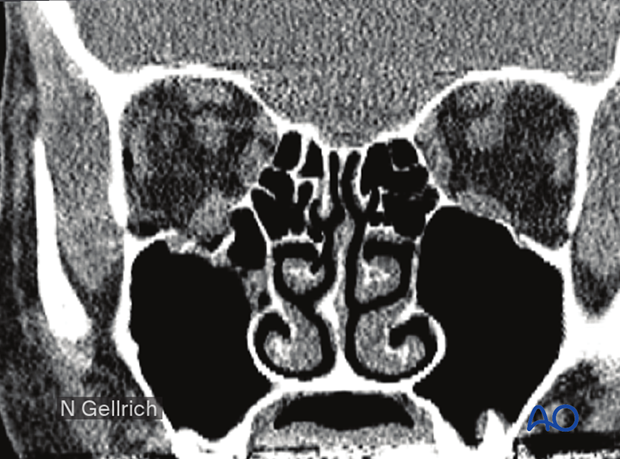
Sagittal slices (hard-tissue window) of the same patient.
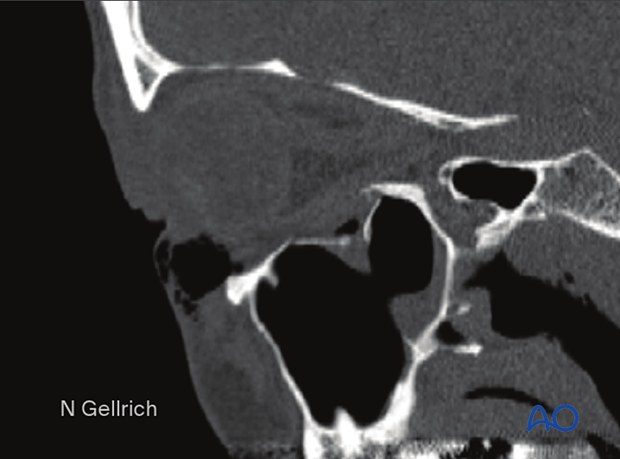
Sagittal slices (soft-tissue window) of the same patient.
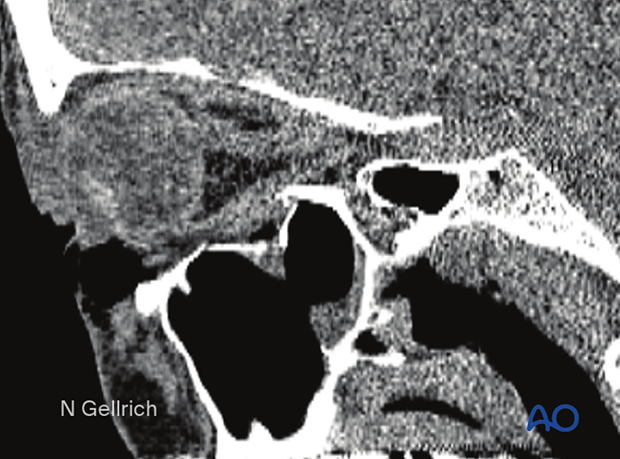
Muscle entrapment
Note the entrapment of the inferior rectus muscle in the left orbit.
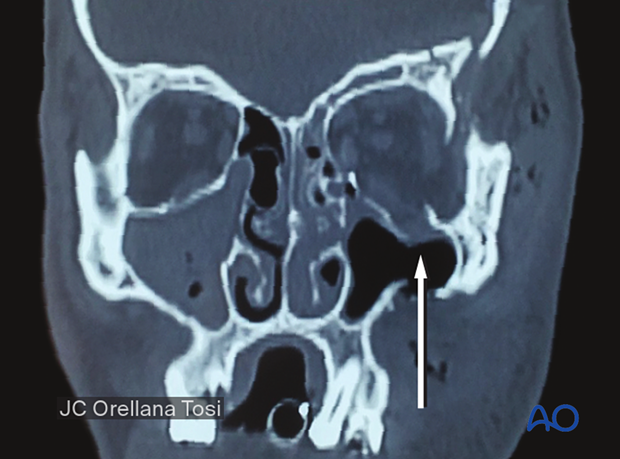
Coronal slice of a patient with a fat herniation and a significant muscle entrapment.
